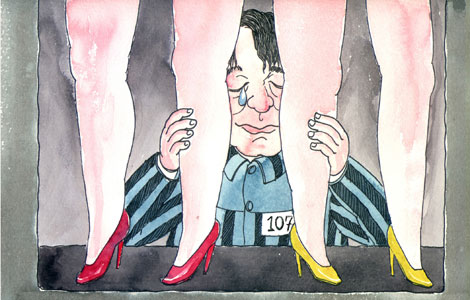Decline of tax base cause of Detroit bankruptcy
Updated: 2013-07-20 17:34
(Xinhua)
|
||||||||
CHICAGO - A steep decline of the tax base is the direct cause of the recent bankruptcy of Detroit, the once thriving US auto industry heartland, says an experienced US attorney.
The city has seen its population dwindling in the past six decades, from a high of 1.8 million in the 1950s to around 700,000 today, noted Thomas Stiebel, a partner at leading US law firm Quarles & Brady LLP.
"Much of the population decline was in the middle class, which contributes the largest portion to the city's tax revenue," said Stiebel.
Another factor is the economic situation, he said. "In 2009, the unemployment rate (in Detroit) was almost 29 percent. It stands today at about twice the national average."
"Detroit also borrowed heavily to meet its operating budgets and pension and health insurance obligations. When the financial crisis hit, these additional obligations became too unbearable for the city to sustain," he added.
One lesson that should be learned from Detroit's case is not to become too dependent on one industry, he said.
James Spiotto, a bankruptcy specialist at legal services firm Chapman and Cutler, said the bankruptcy petition does not constitute a solution as the legal matters take a long time to settle.
"While debt adjustment and the filing of a Chapter 9 are part of a process, it's only a process, not a solution," he said.
Under Chapter 9 bankruptcy, Detroit will be allowed to negotiate with its creditors and bind them to a settlement over the city's some $18.5 billion of debt and other liabilities.
Creditors may only get a fraction of what they are owed, particularly the unsecured creditors, said Stiebel, the legal expert with Quarles & Brady.
In that case, discontent would grow, particularly from city workers and unions regarding their pensions.
If creditors raise objections to filing, said Spiotto, it could take a number of months, possibly even a year, before the bankruptcy court determines whether the filing by Detroit meets the requirements for filing.
In the bankruptcy filing last June by Stockton, California, it took almost a year before the court determined the issues, said Spiotto.
He also cited another Californian city, Vallejo, which filed bankruptcy in 2008. "It's one seventh the size of Detroit," said Spiotto. "It took the city over three years to exit Chapter 9."
It is important for Detroit to develop a recovery plan that will stimulate business activity, improve infrastructure, and attract new citizens by providing jobs, he said.

 'Trayvon Martin could have been me, 35 yrs ago': Obama
'Trayvon Martin could have been me, 35 yrs ago': Obama
 China launches three experimental satellites
China launches three experimental satellites
 Bruce Lee's daughter recalls his energy
Bruce Lee's daughter recalls his energy
 Giving take-out roast chicken a French twist
Giving take-out roast chicken a French twist
 Tibetan farmers enjoy Onkor festival
Tibetan farmers enjoy Onkor festival
 Girl mauled by mastiff needs $32,580 for surgery
Girl mauled by mastiff needs $32,580 for surgery
 Firefighters hold line against California wildfire
Firefighters hold line against California wildfire
 Rat, rabbit head sculptures on display
Rat, rabbit head sculptures on display
Most Viewed
Editor's Picks

|

|

|

|

|

|
Today's Top News
Six detained over Chinese vendor's death
US court says reporter must testify in leak case
Venezuela VP defends support for Snowden
'Trayvon Martin could have been me': Obama
Asiana legal fallout begins after deadly crash
Floor on lending rates axed by PBOC
Huawei backs UK security review
Blacklist on way for court defiance
US Weekly

|

|






